THE BAROQUE FUSION OF L'ARPEGGIATA
By Howard Davis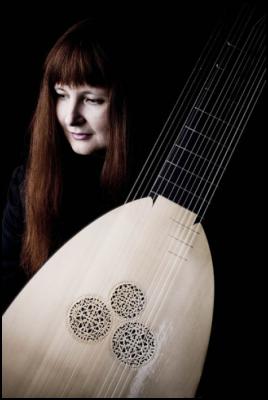
Named after a toccata by German composer Girolamo Kapsberger, L'Arpeggiata produces its unmistakable sonority mainly from the resonance of plucked strings, creating a tightly-woven acoustic texture that is both idiosyncratic and immediately identifiable. Director Christina Pluhar engenders this distinctive tonality associated with the ensemble she founded in 2000 by inviting musicians and vocalists from around the world to collaborate on specific projects illuminated by her musicological research.
Since its conception, L'Arpeggiata has been dedicated to exposing and exploring the rich and relatively obscure repertoire of Roman, Neapolitan, and Spanish composers of the early Baroque. With a lightness of tone reminiscent of Simon Jeffes' Penguin Cafe Orchestra, the ensemble utilizes Pluhar's research on the instrumentarium in the purest Baroque tradition, combining it with a profound appreciation of the art of improvisation. She sponsors a collaboration between music and singing with other Baroque disciplines that were indissoluble in their time, such as dance and theatre, while also incorporating a variety of diverse and eclectic musical genres, including jazz and traditional folk music.
Pluhar first discovered her deep affinity for Baroque and Renaissance music while studying classical guitar at the University of Graz in her Austrian hometown. She subsequently mastered the theorbo (a large lute with the neck extended to carry several long bass strings) and Baroque guitar at the Royal Conservatory of The Hague and the Schola Cantorum Basiliensis with Hopkinson Smith. She also studied Baroque harps with Mara Galassi at the Schuola Civica di Milano and took masterclasses with Paul O'Dettes, Andrew Lawrence King, and Jesper Christensen. In 1992, she won first prize at the International Competition of Ancient Music in Malmö with the ensemble La Fenice. Now based in Paris, Pluhar regularly performs both as a soloist and continuist and has collaborated with many other ensembles - including Hesperion XXI, Il Giardino Armonico, Concerto Soave, Accordone, Elyma, Les Musiciens du Louvre, Ricercar Consort, La Grande Ecurie and the King's Chamber, and Cantus Cölln. Since 2001, she has been assistant to Ivor Bolton at the Munich Staatsoper. Pluhar has also been guest conductor of the Australian Brandenburg Orchestra, the European Baroque Orchestra, and Portugal's Divino Sospiro.
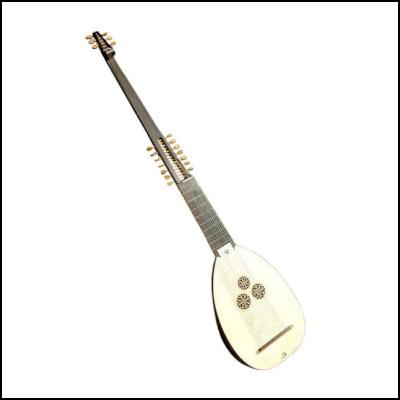
L'Arpeggiata has been regularly rewarded for its rich discography, winning the 2008 VSCD Musiekprijs, Holland's Edison Price in 2009, and Germany's Echo Klassik Preis three years in a row. Early albums include La Villanella, Homo Fugit Velut Umbra, La Tarantella, All'Improvviso, Rappresentatione di Anima, Di Corpo, Naïve, and Los Impossibles. Los Pájaros (devoted to traditional Latin American music) was issued in 2012, and Mediterraneo in 2013. Music for a While - Improvisations on Purcell with counter tenor Philippe Jaroussky was released in 2014, Francesco Cavalli -L'amore Innamorato in 2015, and Orfeo Chaman last year.
L'Arpeggiata has collaborated with such outstanding soloists as Nuria Rial, Raquel Andueza, Véronique Gens, Stéphanie d'Oustrac, Cyril Auvity, Emiliano Gonzales-Toro, João Fernandes, Lucilla Galeazzi, Vincenzo Capezzuto, fado star Misia, and jazz and flamenco artists like Gianluigi Trovesi and Pepe Habichuela. In June 2011, L'Arpeggiata performed Giovanni Andrea Bontempi's 1662 Il Paride at the Musikfestspiele Potsdam Sanssouci and presented it again in August 2012 at the Innsbrucker Festwochen der Alten Musik. L'Arpeggiata's live performances are an invitation to experience Baroque music by returning to its original meaning - a 'pearl of irregular shape.' The works of the period furnish L'Arpeggiata's recitals with a nacreous lustre in which artists, genres, and traditions commingle, making each concert an iridescent display of pizzicato proficiency. At Wellington's Michael Fowler Centre, L’Arpeggiata presented an oneiric programme that fused Henry Purcell’s delicate and delightful theatre and court music with jazz improvisation.
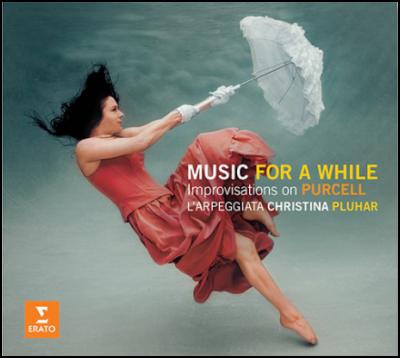
Dr. Ilja Stephan's programme notes helpfully explain that Purcell's "trade secrets are perhaps most tellingly revealed by the song that gives this programme its name: 'Music for a While.' The piece come from the incidental music to Dryden and Lee's adaptation of Sophocles' tragedy Oedipus the King. At the point where this vocal number was inserted, a priest invokes the spirit of Oedipus' father Laius. Purcell employs his favorite compositional technique, the 'ground' - a constantly repeated bass - to conjure up the image of the ghost rising from the Underworld: with each repetition the bass figure slides a small step upwards. When the text evokes Alecto - the Fury who drives the parricide Oedipus mad - the power of the music is even more vividly represented: Purcell multiplies the reiterations of the word 'drop,' broken up by rests, so that with each note we seem to hear falling to the ground, subjugated by the music, another of the snakes that dart wildly in all directions around the Fury's head." Taking its inspiration from these recurring bass patterns upon which Purcell built his songs, hymns, and dances, 'Music for A While' also featured sections of ‘Dido’s Lament’ from 'Dido and Aeneas,' and ‘Strike the Viol’ from 'Come Ye Sons of Art.'
L'Arpeggiata's repertoire includes Renaissance and Baroque music played on exotic early instruments from the 16th, 17th, and 18th centuries, such as the Baroque guitar, harp, theorbo, and archlute - a plucked string instrument developed around 1600 as a compromise between the larger theorbo, the size and tuning of which makes for difficulties in the performance of solo music, and the Renaissance tenor lute, which lacks the bass range of the theorbo.
Pluhar provided steady rhythmic accompaniment on the theorbo and Eero Palviainen worked his magic on the archlute. While the Baroque lute has 11-13 courses, the archlute typically has 14, preserving the tuning of the Renaissance lute, with perfect fourths surrounding a third in the middle for the first six. Essentially a tenor lute with the theorbo's neck-extension, the archlute lacks the power provided in the tenor and bass ranges by the theorbo's large body and greater string length. It was often used as a solo instrument in the 17th century, but is rarely mentioned as a continuo instrument during in this period, the theorbo being the preferred instrument for this role.
As continuo bass lines became both faster in motion and higher in tessitura towards the end of the 17th century, however, the archlute eclipsed the theorbo as the main plucked string continuo instrument. The theorbo lacks the higher notes of the bass lines and the increasing practice of doubling the continuo part with a bowed bass, either cello or viol, made the archlute's lack of power in the tenor and bass less important. Theorbos were commonly used as the melodic bass instrument in trio sonatas from the beginning of the Baroque period until the archlute took over that function, the most famous example being Corelli's Opus 1.
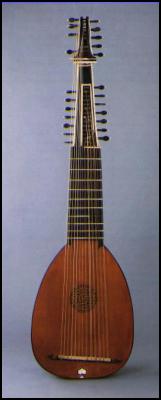
The eleven virtuosi combined the extemporaneous approach of the Baroque era with that of jazz, Boris Schmidt's ostinato bass lines providing a plethora of opportunities for Gianluigi Troversi on clarinet and Doron Sherwin on cornet to improvise freely. Pianist Francesco Turrisi and percussionist Sergey Saprychev alternated between providing discretely measured accompaniment and delicate solo stylings. Glamorous soprano Celine Scheen's filigree phrasing blended seamlessly with the mellifluous instrumental solos, while the elegantly refined arrangements alternated between profoundly plangent, melancholy, and mournful soundscapes, and light, frothy, sweet confections - like a perfectly composed zabaglione.
Pluhar not only lead this ensemble of technically outstanding musicians through a mesmerizing and hypnotic tour of a timeless repertoire, but also provided the audience with a euphonious gloss on early musical forms. It was like overhearing an ethereal, haunting, and bewitching conversation across the centuries, infused with a gently subversive and playful tweaking of conventional expectations.



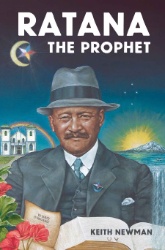 Keith Newman: Revised Edition Of Ratana Biography Highlights Lasting Legacy
Keith Newman: Revised Edition Of Ratana Biography Highlights Lasting Legacy Environmental Defence Society: Groundhog Day, New Book Shows History Is Repeating Itself
Environmental Defence Society: Groundhog Day, New Book Shows History Is Repeating Itself NZEI Te Riu Roa: Mandated Single Approach To Reading Will Not Work
NZEI Te Riu Roa: Mandated Single Approach To Reading Will Not Work The Conversation: Could The School Phone Ban Work?
The Conversation: Could The School Phone Ban Work? Public Health Communication Centre: To Avoid A Measles Epidemic, Aotearoa Must Close The ‘Immunity Gap’
Public Health Communication Centre: To Avoid A Measles Epidemic, Aotearoa Must Close The ‘Immunity Gap’ Heritage New Zealand: Kid-friendly Archaeology Resource Kit Launched As Part Of Archaeology Week
Heritage New Zealand: Kid-friendly Archaeology Resource Kit Launched As Part Of Archaeology Week